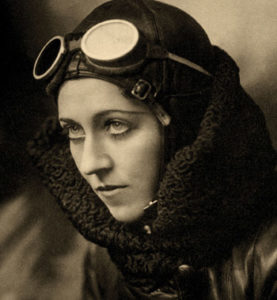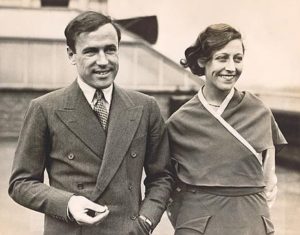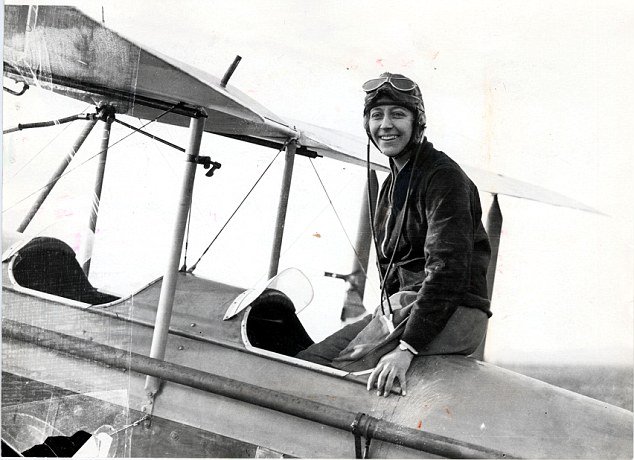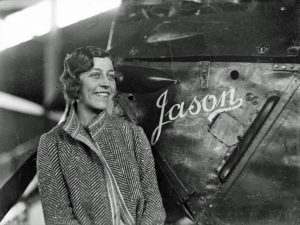Today, October 11th, is the International Day Of The Girl where the global focus is on empowering girls and raising awareness of the challenges that they face. Ensuring that girls everywhere have the chance to have their voices heard, achieve their dreams and to be afforded their human rights will help the 1.1 billion girls across the world to live happy and fulfilled lives.
Whilst Amy Johnson was a young woman when she achieved great things, she is still a wonderful role model for girls and as we have a road named after her here in Blackpool, we thought we’d bring you the inspirational story of aviator Amy Johnson!
Amy Johnson Way in Blackpool
If you’ve paid attention whilst driving into the retail park on Squires Gate, you’ll have noticed that the road there is named “Amy Johnson Way”. Have you ever wondered why it was named after this lady though?

Amy Johnson was a British aviator who made aviation history when she became the first female to fly from England to Australia when she made an 11,000 mile round trip to Darwen in Australia, flying from Croydon on 26th May 1930. The trip took her 19 days, falling short of breaking the world record for the trip, which at the time was 18 days. The Croydon to India portion of her trip did however earn her a place in the records book, setting a new record.
Amy’s Early Flying Experiences
Educated at the University of Sheffield, Johnson graduated with a degree in economics and she went on to work as a solicitor in London. Amy started learning to fly as a hobby whilst she was living and working in London.
Amy Johnson wasted no time in proving that women were just as able to show competency as men in this male dominated area. It was only a year after she began flying that she completed the England to Australia round flight.
In addition to her achievements in the air, in 1930, Johnson also became the first female ground engineer. For a short while, she was the only female with the job role in the world.
The 1930s saw Amy set numerous records including becoming the first person to fly to Moscow from London in just a day. She also set a record for a solo flight between London and Cape Town.
A Plane Named Jason
One of Amy’s biggest supporters was her father who helped her to raise the money needed to purchase her first aircraft. She purchased a second hand Gipsy Moth plane that Amy named Jason after her father’s fish business.
The Gipsy Moth is now part of an exhibit in the Science Museum.
A High Flying Proposal
The story goes that just 8 hours after meeting Johnson Scottish pilot Jim Mollinson proposed to her during a flight they were taking together. Amy actually accepted the offer and they were married in 1932. The couple often flew together as a duo but were injured in a crash in Connecticut in America.

The romance didn’t last long and just 6 years after their marriage, Amy applied for a divorce.
Heroic Duties
During WWII, Amy Johnson joined the Air Transport Auxiliary. This group was put together to transport RAF aircraft around the UK. Once again, Johnson proved her abilities by rising through the ranks to become First Officer.
Her Last Flight and Tragic Death
On 5th January 1941, Amy was flying an Airspeed Oxford from Prestwick to RAF Kidlington near Oxford via Blackpool airport. It is believed that due to unfavourable weather conditions, the aircraft had gone off course and Johnson had no other choice but to bail out of the plane as it crashed onto the Thames Estuary close to Herne Bay.
The HMS Halesmere was close by and the crew reported seeing the parachute fall into the water and they also said that they saw Amy alive in the Thames, calling out for help. Due to strong tides, snow and the very low temperatures of the January evening, the rescue attempt was futile. Lt. Commander Walter Fletcher of the Halesmere dived into the cold water to try to rescue Johnson, but was unsuccessful. He was taken to hospital and sadly died a few days later due to the intense cold of the water.
The son of one of the crew members from the Halesmere claimed that his father had a theory that Johnson got sucked into the ship’s propellors and said that this was how she died although he did not see this happen.
As Johnson’s body was never found, the actual cause of her death was never determined. Amy was just 37 years old when she died.
Due to the lack of a body to bury, Amy Johnson is commemorated by the Commonwealth War Graves Commission on the Air Forces Memorial at Runnymede. Her name is displayed there as Amy V. Johnson as a member of the ATA with no known grave.








